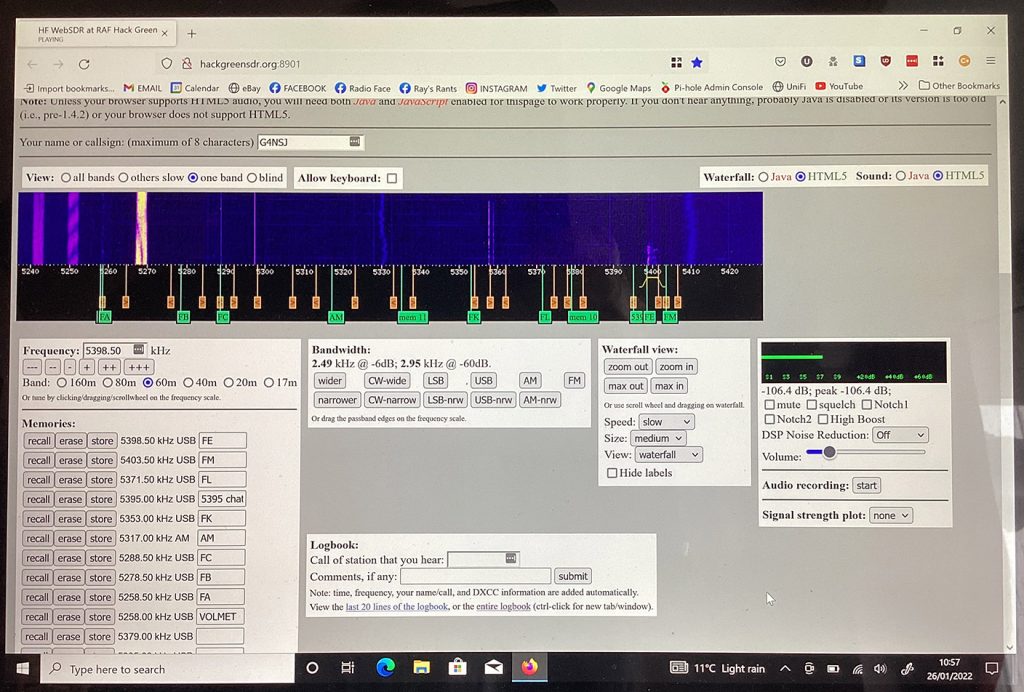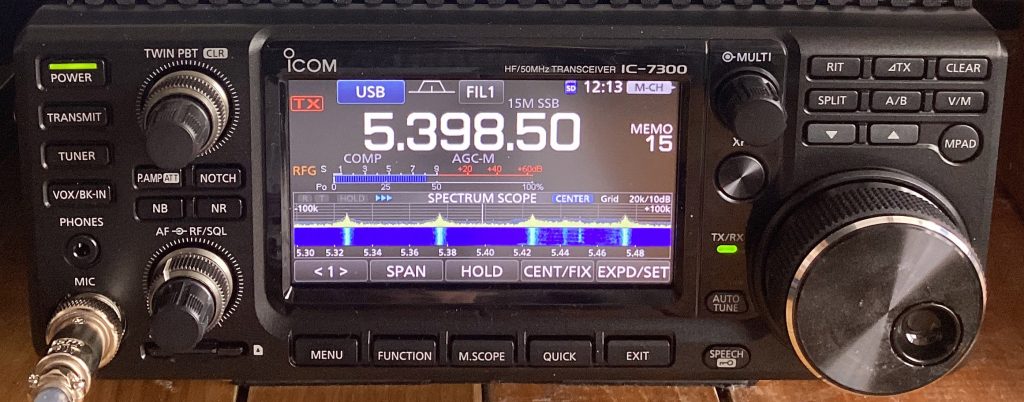Am audio introduction:
I received my NOV for these frequencies back in 2002 when the 5MHz experiment first began. In fact, going back a few decades to the 1960s, I was on 5330kHz (Delta Oscar) using a 19 set when the CCF (combined cadet force) boys were active. Highly illegal, of course. But an educational and most valuable experience.
Back to legal 5MHz operation:
A NOV is no longer required, but the 5MHz frequencies may only be used by full license holders. Sitting between 80 and 40 metres, it’s an interesting part of the spectrum with inter-G contacts possible during the day and DX at night. There are a few stations close to me who operate AM on 5317kHz so it’s worth monitoring that frequency. I have to admit to using the Hack Green WebSDR when the band is very noisy. I’m pretty sure the local QRM is generated by plug-in switch mode power supplies. But it’s definitely not coming from my house!
I usually monitor what was the old calling frequency (Fox Echo) 5398.5kHz. To be honest, I’m not sure where people listen these days so I stick the old old calling fx. I mentioned the Hack Green WebSDR because there are times when local interference obliterates 60 metres. I find it best to monitor Hack Green alongside my transceiver as I might miss something important, such as a military station asking me to close down. It’s also useful to hear my transmission via Hack Green and to check propagation. Here is a screen shot on the website.
My antenna is a 100 foot doublet up at 30 feet in the centre. It’s fed with 300 ohm balanced line into a Transmatch matching unit. It works really well on 60 metres. Saldy, I suffer from a lot of QRM on the band. You can see four noise spots on the waterfall below with lots of buzzing in between. Fortunately, the noise moves down the band at times, leaving me in peace!
Update 18/1/24:
I’ve neglected 5MHz for far too long so, starting today, I’ll be trying to get onto the band every day. At least one contact every day would be a good start. The band is in good shape at the moment and I’ve already had a chat with a station up in Huddersfield. The first of many, I hope!
60 metre beacon:
There’s a beacon on 5205.25kHz located in Luxembourg running 5 Watts. Call sign LX0HF with cw ident. Good for checking propagation.
Here’s a useful link to 5MHz world-wide frequency allocations.
Tuning between the allocated amateur frequencies:
I’m not going to mention what I’ve heard but you might find it rather interesting if you tune around between 5100kHz and, say, 5600kHz. In fact, there are all sorts of interesting goodies between 4MHz and 6MHz.


